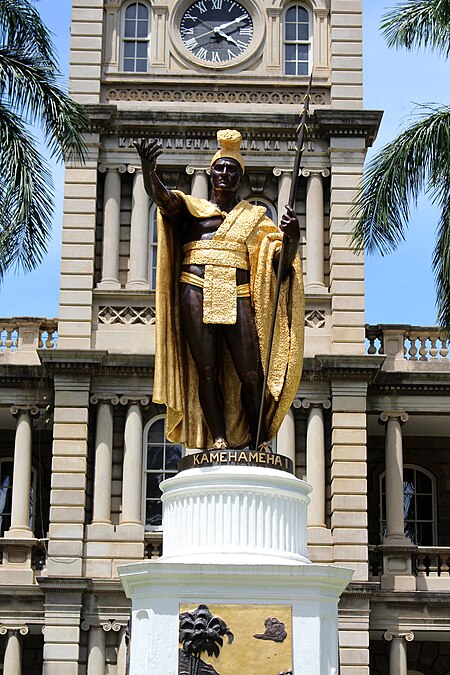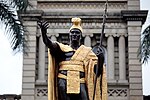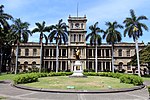Statue of Kamehameha I (Honolulu)
1883 establishments in HawaiiSculptures by American artistsStatues in Hawaii

The Kamehameha I statue (Honolulu cast) is an outdoor sculpture by American artist Thomas Ridgeway Gould, erected in 1883. The first cast in the series, Kamehameha I statue (original cast), is located in North Kohala on the island of Hawaiʻi. The second cast stands outside the Aliʻiōlani Hale government building in Honolulu, located on the island of Oahu. Made of cast brass, it depicts Kamehameha I and has become a recognizable cultural symbol for the Hawaiian Islands.
Excerpt from the Wikipedia article Statue of Kamehameha I (Honolulu) (License: CC BY-SA 3.0, Authors, Images).Statue of Kamehameha I (Honolulu)
South King Street, Honolulu Hawaii Capital Historic District
Geographical coordinates (GPS) Address Nearby Places Show on map
Geographical coordinates (GPS)
| Latitude | Longitude |
|---|---|
| N 21.30571 ° | E -157.85965 ° |
Address
King Kamehameha the Great Statue
South King Street
96808 Honolulu, Hawaii Capital Historic District
Hawaii, United States
Open on Google Maps








